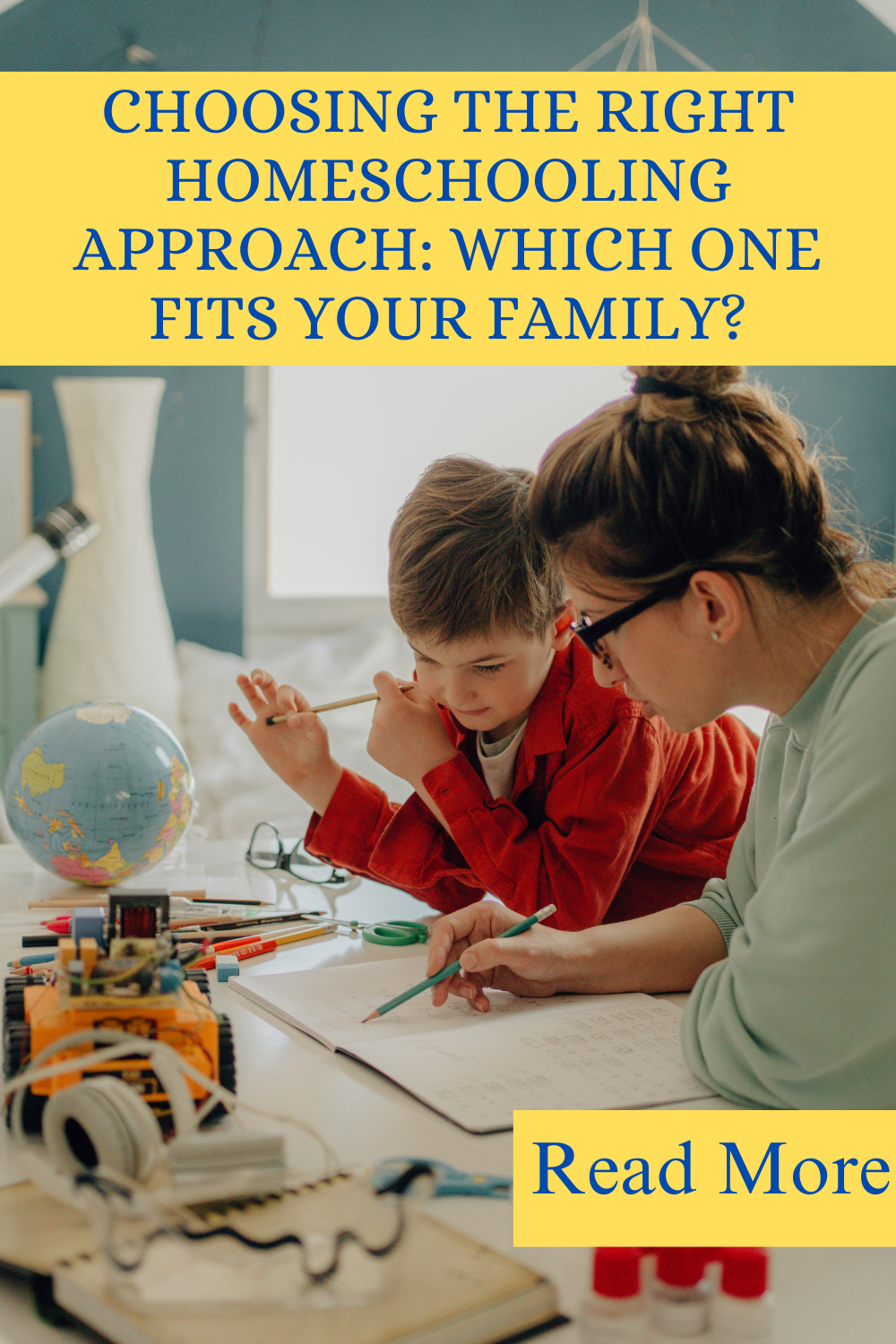Choosing the Right Homeschool Approach
I recently had a very interesting conversation with an acquaintance who asked about my personal homeschool journey. During our discussion, I learned that she was considering homeschooling but felt overwhelmed by the abundance of information and resources available. When I first began homeschooling, I felt exactly the same way. I researched everything—from Charlotte Mason to Montessori to Unschooling—before finally finding a rhythm that blended Waldorf and traditional styles. What I learned is that there’s no single “right” approach to homeschooling.
Every family, and even every child within a family, has different needs.
If you’re just starting your homeschool journey, you might feel that same mix of excitement and uncertainty. Let’s explore some of the most popular homeschooling approaches to help you find what fits your family best.
The Traditional Approach
Structured lessons, textbooks, and clear expectations—this mirrors a conventional classroom at home.
This approach works well for parents who want consistency and clarity. Lessons follow a predictable routine, often aligned with grade-level standards. It’s great for students who thrive on structure or families planning to transition back into traditional schooling.
🔹 Best for: Families who appreciate structure and predictability.
🔹 Potential challenges: Can feel rigid for creative or hands-on learners.The Charlotte Mason Method
Focused on living books, nature study, and narration, this approach values short, meaningful lessons and time outdoors.
Charlotte Mason learning invites children to connect deeply with stories, art, and nature. Students learn through observation, conversation, and reflection, nurturing a lifelong love of learning without pressure or tests.
🔹 Best for: Families who love books, nature, and discussion-based learning.
🔹 Potential challenges: Requires time and planning to curate quality materials.The Classical Approach
Structured around three stages: Grammar (facts), Logic (reasoning), and Rhetoric (expression).
Classical education builds strong critical thinkers. It emphasizes mastery of language, history, and reasoning through memorization, analysis, and persuasive communication. Many families appreciate its clear developmental path and depth of knowledge.
🔹 Best for: Families who value structure and deep critical thinking.
🔹 Potential challenges: May feel intense for hands-on learners.The Montessori Method
Centered on independence and self-directed exploration, using real-world, tactile materials.
In Montessori education, children learn through exploration and movement. Lessons are hands-on, materials are designed for discovery, and students are encouraged to make choices within a structured environment—fostering confidence and focus.
🔹 Best for: Hands-on learners and families who love organized, purposeful spaces.
🔹 Potential challenges: Materials and setup can be expensive and time-consuming.The Waldorf Method
Emphasizes rhythm, storytelling, art, and imagination—especially in early childhood.
Waldorf learning celebrates creativity and the natural world. Early education focuses on storytelling, music, and movement, with academics introduced gradually. This method nurtures curiosity, empathy, and a love for learning through beauty and rhythm.
🔹 Best for: Families who value creativity and holistic growth.
🔹 Potential challenges: Limited early academics and technology use.The Unschooling Approach
Learning guided entirely by curiosity—through play, exploration, and life experiences.
Unschooling encourages children to learn organically, following their interests without a fixed curriculum. Parents act as guides rather than instructors, supporting inquiry, creativity, and real-world learning moments that unfold naturally.
🔹 Best for: Self-motivated learners and flexible families.
🔹 Potential challenges: It may be difficult to track progress in regulated states.The Unit Study Approach
Integrates multiple subjects around a shared theme (like “space” or “the rainforest”).
Unit studies bring learning to life through themed exploration. Students might read stories, conduct experiments, and create art—all tied to one central topic. It’s especially effective for families teaching multiple age levels together.
🔹 Best for: Multi-age families and learners who love immersive, project-based learning.
🔹 Potential challenges: Requires prep to design balanced, skill-rich units.The Eclectic Approach
A mix of multiple methods—customized to your child’s needs.
Most homeschoolers eventually become eclectic learners, blending what works best from several philosophies. This approach encourages flexibility and personalization, allowing your homeschool to evolve alongside your children’s growth and interests.
🔹 Best for: Families who enjoy flexibility and personalization.
🔹 Potential challenges: Can take time to find the right balance.
During this conversation, I was asked how to best choose a homeschooling approach. I don’t think you need to choose just one, nor do I believe there is a perfect method—only what works best for your child and family dynamic. Many homeschooling families experiment with different methods or even blend them to fit their needs. To decide what’s right for your family, start by observing your child’s learning style—do they thrive with hands-on activities, structured lessons, storytelling, or self-directed learning? Next, consider your teaching style—do you prefer a flexible approach, or do you feel more confident with a structured plan? Finally, think about your long-term goals—are you aiming for a strong academic foundation, creative exploration, or a balance of both? At the end of the day, homeschooling is about creating an environment where your child thrives. Whether you lean toward Charlotte Mason, Classical, Montessori, or Unschooling, the key is to embrace what works and adjust as needed.
If you’d like help planning your homeschool year, visit the InterestEd Library for free educator tools, reflection pages, and creative teaching resources. You can also explore the Choice Boards for Differentiation to help your child personalize learning and take ownership of their progress at home.





